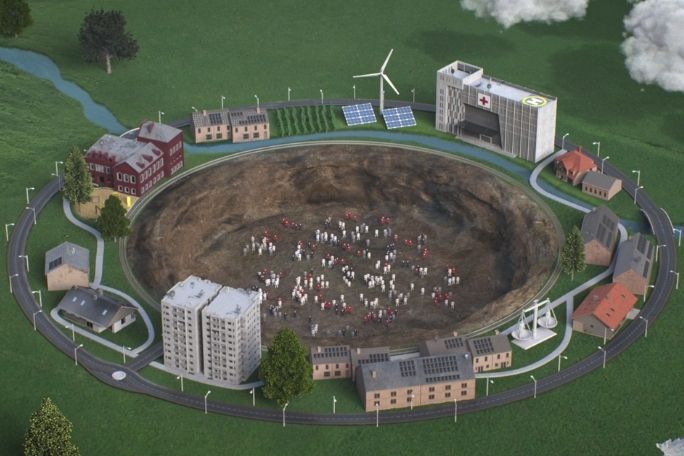Lesson summary
In this lesson, students will revise features of the circular flow and Doughnut Economic models from the previous lesson, 2040–Comparing Economic Models–Economics–Years 9 & 10, before exploring a real-world example of Doughnut Economics in action. Students will have the opportunity to investigate one of the five solutions presented in the 2040 feature documentary. Groups will evaluate the impact all solutions have on environmental and social wellbeing using a set criteria and star rating system. Students will then reflect individually on the solutions using ‘The Doughnut’ model as a guide.
Learning intentions:
Students will...
- understand the features of the Doughnut diagram
- understand the pressures placed on the planet and the inequality of social wellbeing
- understand possible solutions to an environmental and social problem
Success criteria:
Students can...
- identify and label the Doughnut diagram
- identify the environmental problems and social equalities evident in our world
- explore and evaluate possible solutions to problems that are available today
Lesson guides and printables
Lesson details
Curriculum mapping
- Unit of work: 2040 – Economics and Business – Years 7 to 10
- Time required: 100 mins
- Level of teacher scaffolding: Medium – facilitate class discussion
To view our Australian Curriculum alignment click here
To view our NZ Curriculum alignment click here
Resources required
- Student Worksheets – one copy per student
- Device capable of presenting a video to the class
- Devices for students to watch clips in small groups or individually
- Chalk, masking tape or sports markers
- Solutions Evaluation Table
Additional info
2040 is an innovative feature documentary that looks to the future, but is vitally important NOW! Director Damon Gameau embarks on a journey to explore what the future could look like by the year 2040 if we simply embraced the best solutions already available to us to improve our planet and shifted them rapidly into the mainstream.
In Australia: Order the Schools Version of the 2040 DVD. The Schools Version includes an educational license and is for Australian primary and secondary schools that wish to utilise the film as a learning tool or host free on-site screenings for the school community.
In New Zealand: Order the Schools Version of the 2040 DVD. The Schools Version includes an educational license and is for New Zealand primary and secondary schools that wish to utilise the film as a learning tool or host free on-site screenings for the school community.
If you are teaching in either New Zealand or Australia, you can now organise a virtual screening of the film for your class. To enquire about this option, simply email schools@whatsyour2040.com and the 2040 team will help you set this up! If you have already bought a DVD of the film and you have a ClickView account, you can email the team for permission to upload the film to your account to make it more easily accessible for your teachers and students.
Cool Australia, GoodThing Productions and Regen Pictures would like to acknowledge the generous contributions of Good Pitch Australia, Shark Island Institute, Documentary Australia Foundation, The Caledonia Foundation and our philanthropic partners in the development of these teaching resources.


Welcome back!
Don't have an account yet?
Log in with:
By signing up to Cool.org you consent and agree to Cool's privacy policy to
store, manage and process your personal information. To read more, please see
our privacy policy here(Opens in new tab).
Create your free Cool.org account.
Many of our resources are free, with an option to upgrade to Cool+ for premium content.
Already have an account?
Sign up with:
By signing up to Cool.org you consent and agree to Cool's privacy policy to
store, manage and process your personal information. To read more, please see
our privacy policy here(Opens in new tab).